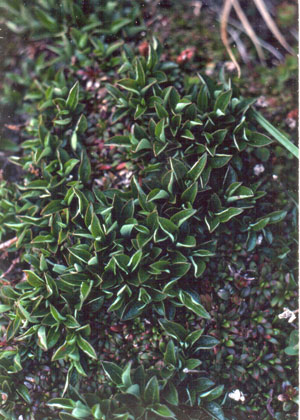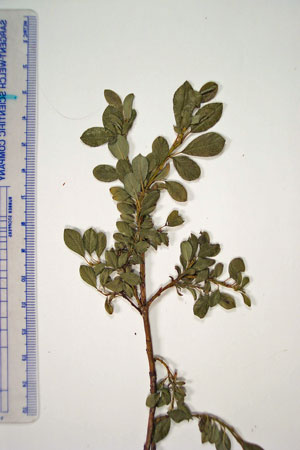DACF Home → Bureaus & Programs → Maine Natural Areas Program → Communities, Plants, and Animals → Rare Plants → Salix uva-ursi

Salix uva-ursi Pursh
Bearberry Willow
- State Rank: S1
- Global Rank: G5
- State Status: Threatened
Habitat: Barrens and alpine areas. [Alpine or subalpine (non-forested, upland)]
Range: Greenland and Baffin Island, south to the mountains of Maine, New Hampshire, and New York.
Aids to Identification: Willows are recognized by their winter buds and flowers. Their buds are covered by a single cap-like scale. Their flowers are very small and are borne in catkins. Identification of willows is complicated by the fact that these plants are dioecious - the staminate and carpellate flowers are borne on separate plants. S. uva-ursi, a prostrate alpine willow, has elliptic leaves which have a thin coating of whitish bloom on the undersurface and are serrate or crenate with gland-tipped teeth. The catkins are 1-4 cm long, and the scales are brown with black tips. Fruits are numerous, conic shaped, 3-4 mm, and glabrous (without hairs).

Ecological characteristics: In Maine, this species is known to occur above treeline on rocky outcrops and gravel.
Phenology: Flowers June - August.
Family: Salicaceae
Synonyms: Salix cutleri Tuckerman; Salix cutleri Tuckerman var. labradorica (Anderss.) Anderss.
Known Distribution in Maine: This rare plant has been documented from a total of 3 town(s) in the following county(ies): Piscataquis, Somerset.
Reason(s) for rarity: At southern limit of range.
Conservation considerations: Populations could be threatened by heavy recreational (hiking) use.